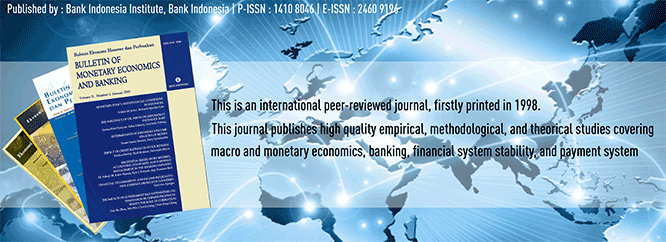
Document Type
Article
Abstract
This research investigates the effects of exchange rate change on the relative current account and real GDP in Indonesia to US. This research provides time series evidence for the period of first quarter of 1990 to second quarter of 2004 under flexibel exchange rate regimes. The analysis is based on a J-Curve theory. First, this research employs unit root, cointegration and Granger causality tests and summarizes the relationships between real exchange rate, the current account, and real GDP. Second, the standard theoretical explanation of the JCurve effect is used to motivate a vector autoregression(VAR) and error correction mechanism(ECM) analysis of real exchange rate change on the relative current account, and real GDP for Indonesia to US. This research finds weak evidence of a J-Curve for the Indonesia current account, in fact these empirical results reject the J-Curve hypothesis. The empirical study finds little evidence that a currency depreciation causes a current account deficits in the short run in Indonesia-US bilateral data and no evidence of a reliable long run effect of exchange rate change on the current account. Interestingly, empirical results show that these evidence are not consistent with the standard theoretical explanation of the J-Curve. Consequently, these empirical results pose a strong challenge for international economic theory and policy.Keywords: exchange rate change, current account, real GDP, and J-Curve theory
Recommended Citation
Arintoko, Arintoko and Wijaya, Faried
(2005)
"Pengaruh Perubahan Nilai Tukar Rupiah Terhadap Neraca Transaksi Berjalan Indonesia, Periode 1990.I – 2004.II (Kasus Indonesia - Amerika Serikat),"
Bulletin of Monetary Economics and Banking: Vol. 8:
No.
3, Article 1.
DOI: https://doi.org/10.21098/bemp.v8i3.142
Available at:
https://bulletin.bmeb-bi.org/bmeb/vol8/iss3/1
First Page
1
Last Page
21
Creative Commons License

This work is licensed under a Creative Commons Attribution-NonCommercial 4.0 International License
Country
Indonesia
Affiliation
Universitas Gadjah Mada







